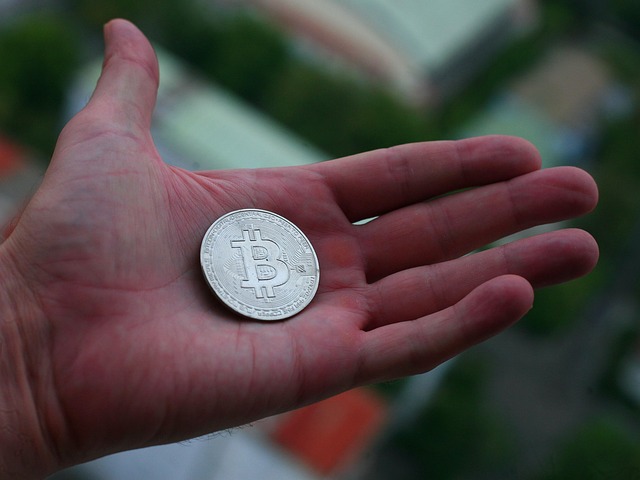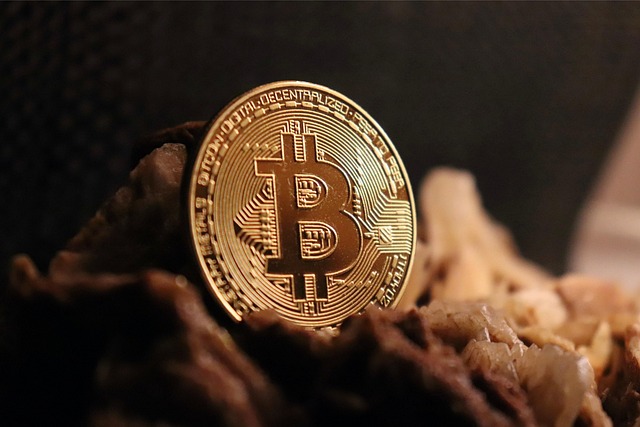Web3 active developers drop nearly 40% in one year
Weekly active developers in the crypto space dropped by almost 40% in one year as “narrative-led” developments took over the industry. Crypto data and analytics platform Artemis Terminal shows that on March 17, 2024, the number of active developers tagged on open-source repositories in a week was 12,380. The number dropped to around 7,600 on March 16, signaling a 38.6% drop in weekly active developers in one year. The number of active developers working across over 1,500 ecosystems is used as an indicator of the Web3 ecosystem’s overall health. Developer activity suggests increased innovation and maintenance of protocols, which contributes to long-term sustainability. Weekly active developers in the crypto space. Source: Artemis TerminalCommunity calls for more developer-led narrativesThe drop in developer activity across the Web3 space spurred calls for more developer-led narratives on social media. On X, Optimism contributor Binji Pande said the drop in one of the “clearest signals of long-term health” means that attention shifted, incentives dried up, and speculation moved faster than utility. The developer said there isn’t much to do onchain, while those building real foundations rarely get into the spotlight. The developer said that this could cause the game to collapse. “If nothing meaningful happens onchain, distribution loses its power,” Pande wrote. Pande underscored the need for more support for developers and more teams thinking about the end-to-end products and not just code. “There’s been a lot of narrative-led development, but there should be more development-led narratives,” Panded added. Related: Ethereum devs prepare final Pectra test before mainnet launchMemecoin “casino” replaced real crypto productsResponding to Pande, developer Ben Ward said that markets and venture capitalists have rewarded protocols with products for too long. The developer said that the only thing in crypto with a product-market fit is the decentralized finance (DeFi) “memecoin casino.” However, the developer said this is not sustainable, adding that the space is far from building things people want to use. In the first quarter of 2024, memecoins became the most profitable narrative in the Web3 space as it became easier to launch tokens using protocols like Pump.fun. The memecoin frenzy extended into 2025, when the United States President Donald Trump joined in, launching his own memecoin token. Pande said that while the space has come a long way, it may have gone the wrong way. The developer said the industry needs to go back to basics and think about how to make crypto “feel futuristic” again. Magazine: What are native rollups? Full guide to Ethereum’s latest innovation
Ripple acquires crypto-friendly prime broker Hidden Road for $1.25B
Blockchain-based payments network Ripple announced it has acquired crypto-friendly prime broker Hidden Road in one of the largest mergers in the cryptocurrency industry to date.Ripple is acquiring Hidden Road in a $1.25 billion deal, the company officially announced on April 8.The deal will make Ripple the first crypto firm to own and operate a global, multi-asset prime broker. According to the company’s April 8 announcement, the acquisition is expected to position Ripple as the world’s largest non-bank prime broker, with Hidden Road currently clearing more than $3 trillion across more than 300 institutions.The acquisition also aims to reinforce the position of Ripple USD (RLUSD), an institution-focused stablecoin launched by Ripple in December 2024.Ripple has been a Hidden Road customer for yearsRipple has been a customer of Hidden Road for years and “knows their breadth of expertise firsthand,” Ripple CEO Brad Garlinghouse said in an X post on April 8.He also mentioned that Hidden Road’s $3 trillion in annual clearing will tap into Ripple-backed XRP (XRP) and its underlying decentralized, public blockchain, the XRP Ledger (XRPL).Source: Brad Garlinghouse“Instead of waiting for up to 24 hours to settle trades through fiat rails, Hidden Road will be using XRPL for clearing a portion of trades, and most consequentially, using RLUSD as collateral across its prime brokerage services,” Garlinghouse wrote on X.“The price tag isn’t what’s most important — it’s that this deal marks a once-in-a-lifetime opportunity for crypto to access the largest and most trusted traditional markets, and vice versa,” the CEO added.The crucial role of SEC leadership changesGarlinghouse said the move comes at a pivotal time in the US digital assets industry and makes a crucial contribution to the market amid a regulatory shift in the US.“We are at an inflection point for the next phase of digital asset adoption — the US market is effectively open for the first time due to the regulatory overhang of the former SEC coming to an end, and the market is maturing to address the needs of traditional finance,” Garlinghouse said, adding:“With these tailwinds, we are continuing to pursue opportunities to massively transform the space, leveraging our unique position and strengths of XRP to accelerate our business and enhance our current solutions and technology.”Hidden Road founder and CEO Marc Asch expressed confidence in the anticipated growth of the company with the acquisition.“With new resources, licenses, and added risk capital, this deal will unlock significant growth in Hidden Road’s business, allowing us to increase capacity to our customer base, expand into new products, and service more markets and asset classes,” Asch stated.This is a developing story, and further information will be added as it becomes available.Magazine: XRP win leaves Ripple and industry with no crypto legal precedent set
Trump administration reportedly shutters DOJ’s crypto enforcement team
The United States Department of Justice (DOJ) is reportedly disbanding the National Cryptocurrency Enforcement Team (NCET).NCET’s disbandment was noted in a four-page memo by United States Deputy General Todd Blanche, according to a Fortune journalist who claims to have seen the document in an April 8 report. The official is quoted saying in the note:“The Department of Justice is not a digital assets regulator. However, the prior Administration used the Justice Department to pursue a reckless strategy of regulation by prosecution.”Blanche is the second-highest-ranking official in the DOJ and served as US President Donald Trump’s defense attorney in high-profile cases, including the New York hush money case and federal cases related to classified documents and the 2020 election.Related: Trump tariff negotiations are ‘all about’ China deal — Raoul PalWhat is the NCET?The NCET’s launch was established in October 2021 under President Joe Biden. At the time, Deputy Attorney General Lisa Monaco said that the unit was aimed at going after platforms “that help criminals launder or hide their criminal proceeds.” She said:“We want to strengthen our capacity to dismantle the financial ecosystem that enables these criminal actors to flourish and — quite frankly — to profit from what they’re doing.”The NCET has been active since February 2022, and at the time of publication, its website remains online. The disbandment is reportedly effective immediately and implemented as part of the efforts to comply with Trump’s late January executive order reshaping US crypto policy.NCET website. Source: US Department of Justice websiteRelated: US federal agencies to report crypto holdings to Treasury by April 7Trump makes waves in US crypto policyBefore returning to office, Trump campaigned on a pro-crypto policy. He promised the creation of a United States strategic Bitcoin (BTC) reserve, spoke at crypto conferences both before and after his reelection and promised to make the US a global crypto leader. He also picked a pro-crypto Securities and Exchange Commission chairman.Despite the administration’s favorable stance, critics have raised concerns over potential conflicts of interest. Trump and his family are behind the World Liberty Financial (WLFI) decentralized finance (DeFi) protocol, the Official Trump (TRUMP) memecoin and his Trump Media is launching crypto exchange-traded funds (ETFs) in partnership with Crypto.com.The projects themselves were also the source of multiple controversies, with the presidential memecoin being hit with insider trading allegations, later written off by some as MEV bot activity. Concerns were also raised about the WLFI’s World Liberty Financial USD (USD1) stablecoin and how it could complicate ongoing bipartisan efforts to pass stablecoin legislation in Congress.This led to Five Democratic lawmakers in the US Senate calling on leadership at regulatory agencies to consider the potential conflicts of interest caused by the USD1 stablecoin in late March. Earlier in April, California Representative Maxine Waters suggested that Trump may be looking to replace the US dollar with his stablecoin.Magazine: Trump’s crypto ventures raise conflict of interest, insider trading questions
MEV bot loses $180K in ETH from access control exploit
A maximal extractable value (MEV) bot lost about $180,000 in Ether after an attacker exploited a vulnerability in its access control systems. On April 8, blockchain security firm SlowMist reported that the MEV bot lost 116.7 Ether (ETH) because of the lack of access control. Threat researcher Vladimir Sobolev, also known as Officer’s Notes on X, told Cointelegraph that an attacker exploited a vulnerability in the bot, causing it to swap its ETH to a dummy token. Sobolev said this was done through a malicious pool created by the attacker within the same transaction. The threat researcher added that this could have been prevented if the MEV owner implemented stricter access controls. Just 25 minutes into the exploit, the MEV’s owner proposed a bounty to the attacker. The owner then deployed a new MEV bot with stricter access control validation. Sobolev compared the exploit to a similar incident in 2023, where MEV bots lost $25 million after being exploited. On April 23, 2023, bots who performed sandwich trades lost their crypto to a validator that went rogue. Related: ‘Unlucky’ MEV bot takes out huge $12M loan just to make $20 in profitRise in fake MEV bot guidesAn MEV bot on Ethereum is a trading bot that exploits maximal extractable value. This is the maximum profit that can be extracted from block production. This is done by reordering, inserting or censoring transactions within a block. The bot observes Ethereum’s pool of pending transactions and looks for potential profits. These bots can do front-run, back-run, or sandwich transactions. This makes the bots very controversial as they steal value from regular users during high periods of volatility or congestion. Despite the controversies surrounding MEV bots, many continue to use them. However, beginners looking to profit from these bots can often fall into a different trap crafted by scammers. Sobolev told Cointelegraph that there has been a rise in fraudulent MEV bot tutorials online. The researcher said the tutorials offer ways to earn money using MEV bots and publish fake installation instructions. “Very often, this will simply allow hackers to steal your money,” Sobolev said. He urged users to check their resources and ensure they are not falling prey to scammers. Magazine: How crypto bots are ruining crypto — including auto memecoin rug pulls
Trump tariff negotiations are ‘all about’ China deal — Raoul Pal
Global trade tensions triggered by US President Donald Trump’s sweeping tariff measures may come to an end with a potential deal with China as investors remain concerned about escalation from both sides.Trump’s April 2 announcement of reciprocal import tariffs sent shockwaves through global equity and crypto markets. The measures include a 10% baseline tariff on all imported goods, effective April 5, with higher levies — such as a 34% tariff on Chinese imports — set to begin on April 9.However, the tariff negotiations may only be “posturing” for the US to reach an agreement with China, according to Raoul Pal, founder and CEO of Global Macro Investor.“In the end, almost all the other tariff negotiations and rhetoric are all about getting China to agree a deal,” Pal wrote in an April 8 X post, adding:“That is the big prize and both China and the US understand it and need it. Everything else is negotiation posturing. China needs a weaker $ and the US needs tariffs.”Source: Raoul Pal“Also, the US is trying to shut down China tariff arbitrage using other channels such as Mexico or Vietnam,” Pal said.Related: Bitcoin price can hit $250K in 2025 if Fed shifts to QE: Arthur HayesChina retaliates with new tariffsConsidering China’s latest retaliatory measures, a resolution remains unlikely in the short term.In response to US tariffs, China imposed a 34% tariff on all US imports effective April 10, media outlet Xinhua News reported on April 4. China’s foreign ministry also vowed to “fight till the end” against Trump’s tariffs, which it called “bullying” by the world’s largest economy.China overtakes the US in global trade. Source: EconovisChina overtook the US in 2012 to become the world’s largest trading nation by the total value of exports and imports, surpassing $4 trillion in goods trade that year, according to The Guardian.Crypto markets watch trade outcome closelyAs the trade dispute continues to evolve, analysts say a potential agreement between the two global superpowers could serve as a key catalyst for recovery in digital asset markets.Crypto markets have a 70% chance to bottom by June 2025 before recovering, Nansen analysts predicted.Related: Crypto market bottom likely by June despite tariff fears: Finance RedefinedInvestor appetite for risk assets such as Bitcoin will depend on the global tariff responses from other countries, according to Nicolai Sondergaard, a research analyst at Nansen.“We have reached somewhat of a local bottom in regard to tariffs and the impact on prices,” the analyst said during Cointelegraph’s Chainreaction live show on X, adding:“Trump came out guns blazing, and we’ve mostly seen the worst from the US side, so we’ll see if other countries are willing to drop some of the tariffs because it’s very likely the US will do the same.”Magazine: Bitcoin ATH sooner than expected? XRP may drop 40%, and more: Hodler’s Digest, March 23 – 29
How to use ChatGPT to turn crypto news into trade signals
Key takeawaysChatGPT can analyze crypto news headlines and generate actionable trade signals, helping traders make faster and more informed decisions.Well-crafted prompts are essential — the more specific your instructions, the more accurate and useful ChatGPT’s responses will be.News-based signals work best when combined with broader market context, like Bitcoin trends or altcoin momentum, for a complete trading picture.AI is a tool, not a guarantee — always verify its insights with other research, charts and risk management practices before executing trades.The cryptocurrency market moves fast, and staying ahead of the curve can feel overwhelming — especially for beginners. News plays a huge role in driving crypto prices, but how do you sift through the noise and turn it into actionable trade signals? Enter ChatGPT, a powerful AI tool that can help you analyze crypto news and spot opportunities. This guide will walk you through how to use ChatGPT (or similar AI tools like Grok) to transform crypto news into trade signals, step by step.However, note that the examples used in this article are simplified and brief, intended purely for illustration purposes — executing AI-generated crypto trades in the real world requires deeper analysis, broader data inputs and thorough risk management.What are trade signals?Before you dive in, let’s clarify what a trade signal is. A trade signal is a suggestion to buy or sell a cryptocurrency based on specific information — like price trends, market sentiment or breaking news. For example, if a coin’s price drops due to increased supply, it might be a “buy” signal if you think it’s undervalued — or a “sell” if you expect it to fall further. The goal here is to use ChatGPT to help you identify these signals from the news.Now, let’s dive into how you can use ChatGPT to turn crypto news into potential trade signals.Step 1: Gather crypto newsTo get started, you need some crypto news to analyze. Here’s how to find it:Websites: Check crypto media websites of your choice.Social media: Platforms like X are goldmines for real-time crypto updates — search hashtags like #Bitcoin, #Ethereum, #CryptoNews or any specific project you’re tracking.News aggregators: Use tools like Google News or Feedly with keywords like “cryptocurrency” or “blockchain.”For example, let’s say you find this headline:“Pi Network price nears all-time lows as supply pressure mounts.”Step 2: Open ChatGPTIf you’re using ChatGPT, head to the OpenAI website and log in. Then, type your questions or prompts into the chat interface.Step 3: Craft a simple promptA “prompt” is just a clear instruction you give the AI. For beginners, keep it simple and specific. Tell ChatGPT what news you have and what you want it to do. Below is an example based on the above-selected headline:Prompt and ChatGPT’s responsePrompt: “I read this news: ‘Pi Network price nears all-time lows as supply pressure mounts.’ Can you analyze this and tell me if it’s a buy or sell signal for Pi Network? Explain why (in brief).”The image below shows a ChatGPT 4o response analyzing this piece of news. It suggests a sell signal, citing the 126.6 million PI token unlock (1.87% supply increase) as a bearish factor likely to push the $0.65 price lower due to weak demand. Limited exchange listings (e.g., not on Binance) and bearish technicals like the relative strength index (RSI) in oversold territory reinforce this. However, buy confidence is noted for long-term investors, as the all-time low might indicate an oversold condition, hinting at a potential rebound. It also advises caution and further research.Step 4: Ask follow-up questionsThe first response might not cover everything, as seen above. Dig deeper with follow-ups like:Follow-up prompt 1: “Are there risks to buying Pi Network at its all-time low? Organize your answer in brief points.”The ChatGPT 4o response to the follow-up prompt No. 1 lists the risks of buying Pi Network at its all-time low ($0.65), as shown in the above image. It highlights token unlocks increasing supply and downward pressure, ongoing bearish momentum with no reversal signs, low liquidity due to absence from major exchanges like Binance, limited real-world utility and adoption, a centralized structure raising concerns, and speculative nature, as success hinges on uncertain future developments. This reinforces a cautious approach.Follow-up prompt 2: “What happened to Pi Network’s price in the past when supply increased? Organize your response in brief points.”ChatGPT 4o’s response to follow-up prompt No. 2 explains that token unlocks, like mining rewards, increase supply, often causing sharp price drops. For instance, the April 2025 unlock of 126.6 million PI tokens led to a 77% decline from February highs as demand lagged. This recurring pattern of price falls due to oversupply reinforces the bearish signal for Pi Network.Step 5: Combine news with market contextNews doesn’t exist in a vacuum. You could ask ChatGPT to factor in broader market trends. For example:Prompt:“Given this Pi Network news, how should I trade if Bitcoin is booming? Keep your answer brief.”ChatGPT 4o’s response to the above prompt advises against buying Pi Network (PI) despite Bitcoin’s (BTC) rise. It suggests avoiding PI due to its weak momentum and oversupply, recommending a focus on stronger assets like Bitcoin or altcoins benefiting from the market uptrend. It also advises waiting for PI demand or exchange listings to improve and using stop-losses if attempting to buy the dip, emphasizing capital protection.Step 6: Test and refineAI isn’t perfect — it’s a tool, not a crystal ball. Test its suggestions with small trades or paper trading (simulated trades without real money). Over time, tweak your prompts to get better results. For example:“Analyze this news — “Pi Network price nears all-time lows as supply pressure mounts” — and give me a buy/sell signal with a confidence score.”Caution: Limitations to be aware ofThe example in this article is based on one news headline and a few prompts. In the real world, successful trading requires analyzing multiple news sources, market trends and technical indicators. Relying on a single news item or prompt can lead to incomplete insights, so always cross-check and diversify your research.Did you know? In 2024, cryptocurrency scams generated a record-breaking $12.4 billion, with over 83% of the fraud tied to high-yield investment schemes and AI-driven “pig butchering” scams, according to Chainalysis — highlighting how artificial intelligence is now fueling the next wave of crypto crime.Risks of using ChatGPT-powered crypto trading insightsCrypto trading with AI bots and tools like ChatGPT can be powerful, but it’s not without risks. Understanding these pitfalls can help you trade more safely.Market volatility: Crypto prices can swing wildly, and bots may not react well to sudden crashes or pumps.Overreliance on AI: ChatGPT’s signals are based on its interpretation of news, which might miss broader market trends or technical factors.Technical issues: Bot platforms can face downtime, bugs or API connection errors, potentially leading to missed trades or losses.Limited news scope: Relying solely on one news headline (like the Pi Network example) could lead to incomplete analysis.Security risks: If API keys are compromised, your funds could be at risk. Always enable two-factor authentication (2FA) on your exchange.Tips for successA few best practices can help you get the most out of ChatGPT-powered trading insights while minimizing risks.Be specific: Vague prompts like “What’s a good trade?” won’t help. Include the news and crypto you’re focused on.Cross-check: Use ChatGPT’s analysis as a starting point, then verify with price charts or other traders’ opinions on X.Stay updated: Crypto moves fast. Feed the AI the latest news for fresh signals.Manage risk: Never trade more than you can afford to lose — AI can guide you, but it’s not foolproof.Start small: Test your bot with a small amount of capital to understand how it performs with ChatGPT’s signals.Diversify signals: Use ChatGPT to analyze multiple news sources, not just one, for a well-rounded strategy.Set stop-losses: Protect your funds by setting stop-loss limits to cap potential losses.Stay informed: Regularly check market trends and news to ensure ChatGPT’s signals align with the bigger picture.Ready to try a new headline?Now that you’ve seen how to turn crypto news into trade signals using ChatGPT, it’s time to put it into action! Pick a fresh headline and follow the steps above.With practice, you’ll get better at spotting opportunities and making informed trades. However, keep in mind that ChatGPT is not a financial adviser — always assess your own risk tolerance before acting on AI-generated insights.Safe trading!
Bitcoin may rival gold as inflation hedge over next decade — Adam Back
Bitcoin could begin to take market share from gold over the next decade as a hedge against inflation and geopolitical uncertainty, according to Blockstream CEO Adam Back.Speaking during a fireside chat with Cointelegraph managing editor Gareth Jenkinson at Paris Blockchain Week 2025, Back said rising inflation and monetary instability across global economies will drive broader Bitcoin (BTC) adoption. He compared the cryptocurrency to gold, noting its scarcity and growing recognition as a store of value despite its 30% correction from its all-time high above $109,000.“Bitcoin has the advantage of being like gold — it’s a scarce asset but also undergoing an adoption curve,” he said.Inflation continues to plague global economies, with major currencies like the US dollar and the euro seeing their supplies rise by more than 50% over the past five years — a development that may drive Bitcoin’s adoption as a hedge against monetary destabilization, according to Back.“Eventually, that money is used to buy all the goods. So eventually they will go up by that much, particularly hard assets like housing, anything physical long term,” Back said. “The inflation rate is probably 10% or 15% for the next decade, an investment return that is very hard to get with stocks or housing rentals.”“So there’s a real prospect of Bitcoin competing with gold and then starting to take some of the gold use cases, like as a geopolitical hedge, take some of that money into Bitcoin.”Adam Back during a fireside chat with Cointelegraph’s Gareth Jenkinson. Source: CointelegraphRelated: Satoshi Nakamoto turns 50 as Bitcoin becomes US reserve assetThe Federal Reserve Bank of Cleveland expects the 10-year inflation rate to average 2.18% annually, according to data published on March 12.Inflation projections. Source: Federal Reserve Bank of Cleveland via FREDHowever, alternative data points to a potential uptick in inflation over the next five years.Consumer inflation expectations spiked to 5% for the next year and 4.1% over the next five years, a development amplifying economic concerns, according to a consumer survey from the University of Michigan published on March 28.Consumers; expected change in inflation rates. Source: University of MichiganRelated: How $100K Bitcoin impacts the wealth gap in the digital ageBitcoin adoption aided by ETFs and policy shiftBeyond growing monetary instability, US-based spot Bitcoin exchange-traded funds (ETFs) and a more crypto-friendly US administration under President Donald Trump may help boost Bitcoin’s adoption as a hedge against inflation.“US regulators approved the ETFs, finally, and the current US administration under Trump is removing a lot of negative regulation that was intended to slow down crypto adoption — like Operation Chokepoint 2.0,” Back said.Back argued that Bitcoin adoption among private investors should precede institutional or governmental accumulation:“I prefer that those people buy Bitcoin ahead of governments because as soon as governments buy, it’s probably going to create a wave of other governments competing with them.”Source: Margo MartinOn March 7, President Trump signed an executive order to create a Bitcoin reserve seeded with Bitcoin seized from criminal cases, a move that industry leaders have called a major step toward integrating Bitcoin into the traditional financial system.Magazine: Bitcoin heading to $70K soon? Crypto baller funds SpaceX flight: Hodler’s Digest, March 30 – April 5
Panicked Bitcoiner mistakenly pays over $70K of BTC in fees
One presumably panicked Bitcoin user paid nearly 0.75 BTC ($70,500) in a replace-by-fee (RBF) transaction fee.The transaction in question was sent about 30 minutes after midnight UTC on April 8. It was the second attempt at performing an RBF that changed the transaction’s target address, sending 0.48 Bitcoin ($37,770) with 0.2 BTC of change ($16,357).Second Bitcoin RBF transaction. Source: Mempool.SpaceAnmol Jain, vice president of investigations at crypto forensics firm AMLBot, told Cointelegraph that the original transaction featured a “default or conservative” fee. The first RBF raised the fee to nearly double the amount and changed the output address.Both of those transactions are waiting for a confirmation that will never come. This is because the much higher fee RBF transaction took its place with the same output as the second RBF transaction — presumably, an attempt to bump the fee to ensure that the RBF is processed rather than the original transaction.Related: How to fix a stuck Bitcoin transaction in 2025: A step-by-step guideA presumed panic-induced errorThe transaction has signs of a panic-induced error, with the user sending a subsequent transaction fast to prevent the original transaction from being included in a block and becoming final. Jain suggested some potential explanations:“Maybe he meant to use 30.5692 sat but, due to haste or butter fingers, ended up using 305,692 sat.“The second RBF transaction also added an additional input unspent transaction output (UTXO). This UTXO contained nearly 0.75 Bitcoin (BTC). The change was mistakenly included as part of the fee, likely because the user failed to update the change address or misjudged the transaction’s structure.Another possibility raised by Jain is that the user got confused between a fee in absolute terms and one set in satoshi per virtual byte (transaction size) or that the automated script behind the transaction contained a bug. The wallet could allow setting a fee in satoshis, which could lead to a scenario where the fee is set way too low, a warning about the low fee and an overcorrection:“System reads it as 30 sats total fee, which is way too low, so user types 305000 thinking it means 30.5 sat/vB, and the wallet actually applies 305,000 sats/vB, which is insane.“Related: Bitcoin user pays $3.1M transaction fee for 139 BTC transferReplace-by-fee: a controversial featureRBF is a widely misunderstood and controversial feature of Bitcoin. Bitcoin transactions are considered non-final until they are included in a block, with further confirmation by more blocks in the same chain.Transactions in the mempool are at the mercy of miners — who are expected to be profit-driven. Bitcoin developers foresaw that with multiple conflicting Bitcoin transactions, the financial incentive would be to process the one paying the higher fee.There is no easy way to prevent Bitcoin miners from simply including the transaction that was sent first, and it is also not straightforward to establish which transaction was submitted first due to the decentralized nature of the network. Consequently, this incentive was recognized in the RBF feature, allowing users to edit unconfirmed transactions by submitting an alternative transaction with a higher fee.This led to some controversies in the past, with Bitcoin Cash (BCH) proponent Hayden Otto claiming that RBFs allowed for Bitcoin double-spends back in 2019. In contrast, Bitcoin Cash has removed the feature and claimed that unconfirmed transactions sent on that network are final and secure to accept.Still, with the way blockchains function, RBF-like transactions were confirmed to occasionally occur on Bitcoin Cash either way. This is because RBF is just an implied property of a Bitcoin-like consensus mechanism that was formalized as a feature.Magazine: I became an Ordinals RBF sniper to get rich… but I lost most of my Bitcoin








